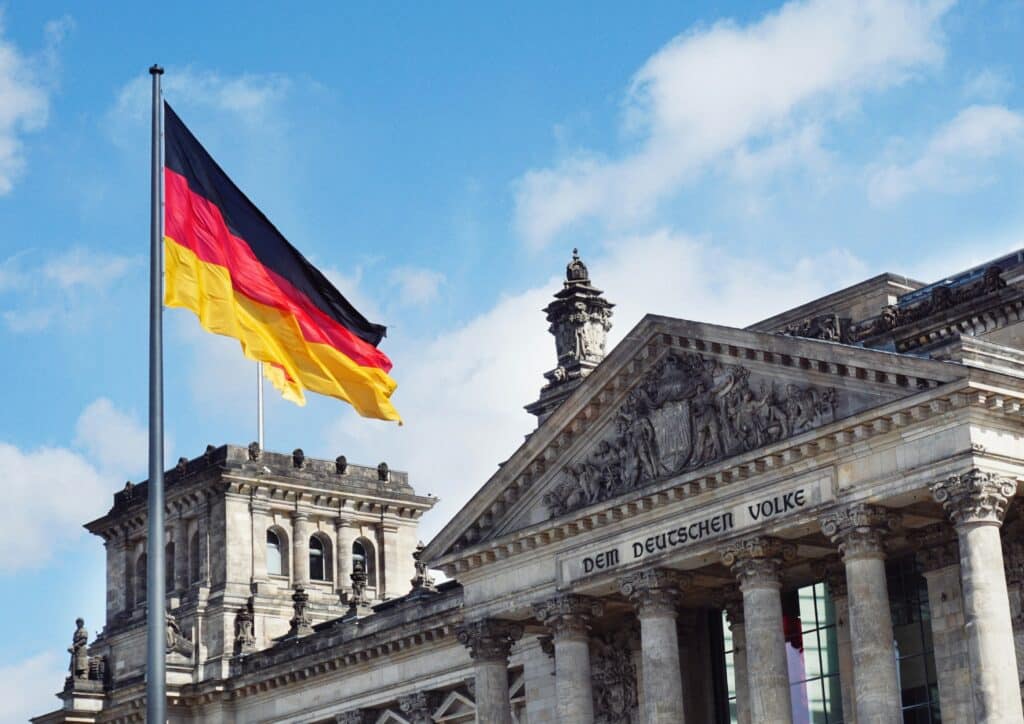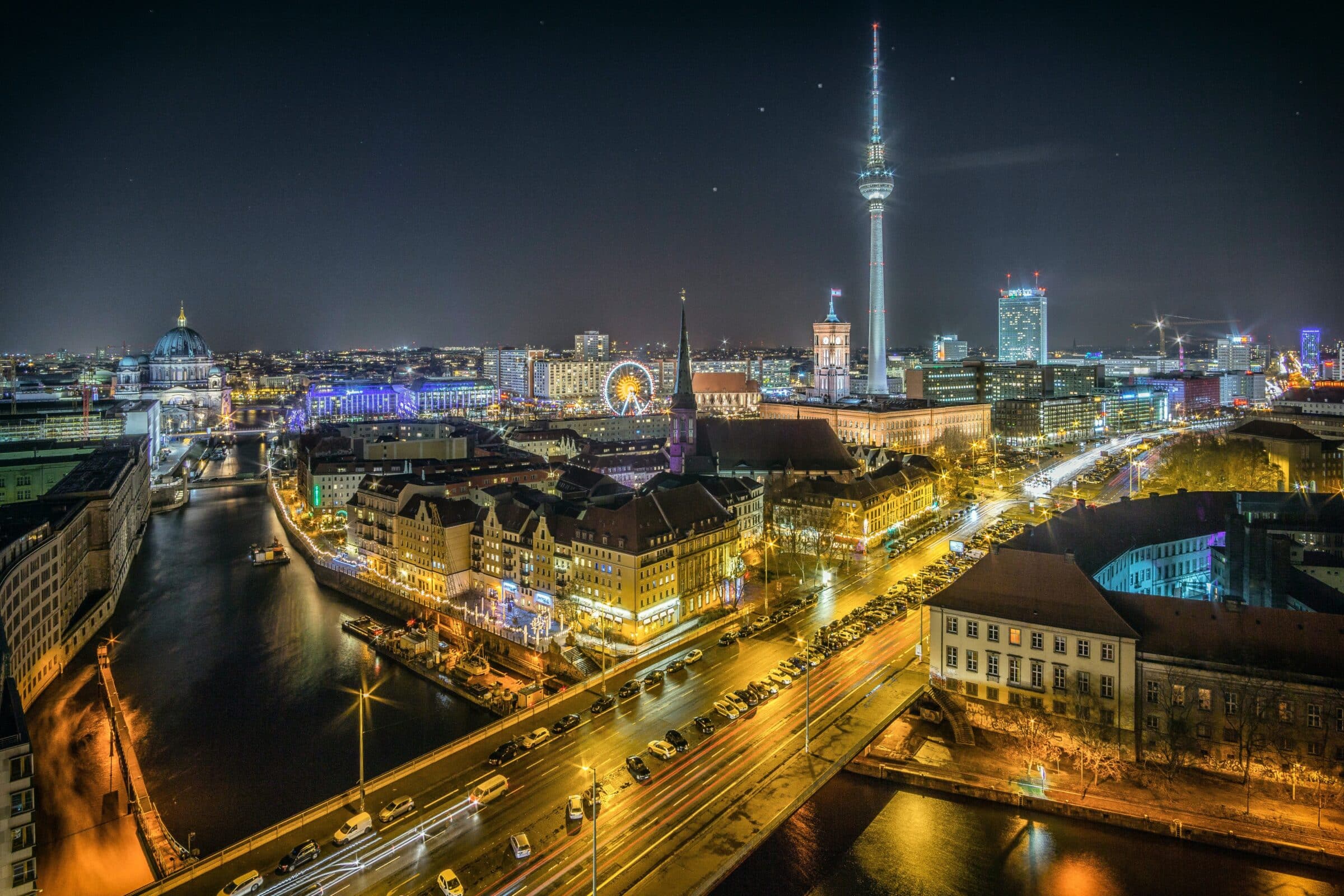The implementation of the Internet of Things (IoT) across Germany has rapidly increased over the last few years, leading the country to become one of the top innovators in the field.
With its strong industrial background and commitment to technological advancement, Germany has created a conducive environment for IoT development and adoption.
In this post, we will explore the ways in which Germany has been driving innovation in IoT and the potential impact it can have on various industries.
The Growth of IoT in Germany
The increase in the use of IoT in Germany can partly be attributed to the country’s strong manufacturing industry, particularly in the automotive and industrial machinery sectors.
These industries have been quick to embrace IoT technology, using it to optimise their post-delivery services, processes, cost reduction and efficiency.
With a strong focus on innovation and the adoption of emerging technologies, Germany has emerged as one of the leading countries in the development and deployment of IoT solutions.
The country’s advanced manufacturing sector, renowned for its precision engineering and high-quality products, has been a key driver of IoT adoption.
By integrating sensors, connectivity, and data analytics into their production processes, German manufacturers have been able to improve efficiency, reduce costs, and enhance product quality.
With this focus on advancement in industrial and automotive IoT, the German IoT market is estimated to grow at a steady annual rate of 11.94% from 2023 to 2028.
Currently, the German IoT market is valued at an estimated $13 billion – an 18% increase from $11 billion in 2022.
However, when we take a step back to look at the bigger picture, we can see that the German IoT market is making a profit at an impressive rate, especially with the sector estimated to generate $29.98 billion in revenue by the end of 2023. This figure is expected to grow to $52.7 billion by 2028.
The growth of Germany’s IoT sector can also be attributed to the German government, which played a significant role in promoting the development and adoption of IoT.
In 2013, the government launched its “Industrie 4.0” initiative, which aims to modernise the country’s manufacturing industry by leveraging technologies such as IoT, artificial intelligence and automation. This initiative has provided funding and resources for companies to develop and implement IoT solutions.
Adoption rate of IoT technology in Germany
The implementation of IoT in the European giant has been steadily increasing over the last five years, highlighting the vitality of IoT technology within modern business spaces.
This is supported by the fact that the implementation of IoT technology used by companies based in Germany has increased from 39% in 2018 to 66% in 2022.
The increase in adoption of IoT technologies has led to Germany boasting a much higher rate in Germany than when compared to the global average.
For example, in Germany, remote/smart service and maintenance technology lies at a 50% adoption rate, higher than the 28% global adoption rate.
Other IoT adoption use cases include:
- Remote asset monitoring (33%, 32% global)
- Predictive maintenance (34%, 29% global))
- Condition-based maintenance (34%, 28% global)
- End-to-end track and trace (30%, 26% global).
Use cases of Internet of Things in Germany
As mentioned, the automotive and industrial IoT sectors are the two strongest aspects of the German IoT market and their growth is expected to continue in the foreseeable future.
Data suggests that the automotive and industrial sectors are estimated to generate similar revenue by 2028 – each approximately $18.2 billion.
With a formidable reputation for precision engineering and efficiency, the integration of IoT in these industries has been a major driving force behind Germany’s thriving economy.
In automotive IoT, German manufacturers have been able to implement connected car technology, allowing vehicles to communicate with each other and gather data on traffic patterns and road conditions.
This not only enhances safety but also allows for more efficient use of resources such as fuel.
In industrial IoT, Germany excels in the use of sensors and data analytics to optimise production processes.
This has resulted in improved quality control, reduction of waste and downtime, and overall cost savings for manufacturers.
Developments in these sectors are playing a key part in “Industry 4.0”, also known as the Fourth Industrial Revolution.
This concept focuses on the digitisation of manufacturing and production processes, with IoT playing a vital role in its implementation.
Outside of these key sectors, IoT is also being used in other industries such as healthcare, energy, smart cities, and transportation.
German Industrial IoT
Currently Germany’s biggest IoT market, the industrial sector is responsible for an estimated $10.43 billion in annual revenue and is expected to grow by 75% by 2028 to $18.28 billion.
Since 2018, the German Industrial IoT sector grew by 137%, including an 18.5% increase from 2022 to 2023.
The emergence of Industry 4.0 has been one of the key drivers of this growth, with German manufacturers keen to adopt innovative technologies that can improve their production processes.
A major focus within the industrial sector has been on predictive maintenance, with companies implementing sensors and data analytics to monitor equipment and predict when maintenance is required.
This not only reduces downtime but also avoids costly repairs or replacements.
Additionally, these innovative IoT solutions enable machines and equipment to communicate with each other and with a central control system. This allows for real-time monitoring and data analysis to improve efficiency and reduce downtime.
Automotive IoT in Germany
In Germany, manufacturers are at the forefront of developing connected cars within the automotive sector.
These vehicles use IoT technology to collect data from sensors placed throughout the car and communicate with other vehicles and infrastructure.
This enables features such as automatic emergency braking, parking assistance, and real-time traffic updates.
These advancements have enabled the automotive IoT sector to generate $9 billion in revenue in 2023 – slightly less than the country’s Industrial IoT sector.
However, in terms of year-on-year growth, the IoT automotive sector dominates with a 29% increase from 2022 and an 189.5% increase from 2018.
This growth shows no sign of stopping, with an estimated 106.3% increase forecasted by 2028 to $18.25 billion.
In addition to sensor technology improving the driving experience, the implementation of IoT technology also allows for better data collection on driver behaviour and vehicle performance.
This information is crucial for manufacturers to improve their products and develop more efficient and sustainable vehicles that can unlock new opportunities.
Healthcare & Other IoT Applications
Aside from the automotive and industrial sectors, healthcare in IoT plays a big role in Germany.
Considering there has been a 132% increase in revenue from 2018, Germany’s IoT healthcare sector is expected to grow by a further $1.35 billion from 2023 to 2028.
One application of IoT in the healthcare industry is telemedicine and health monitoring solutions, which allow for the remote monitoring of patient’s health and enable them to receive medical advice from professionals without leaving their homes.
This technology enables improved patient care and can reduce the burden on hospitals, especially in times of crisis.
Other industries such as energy and transportation also benefit from IoT technology, with smart grids and connected vehicles becoming more prevalent in Germany.
The country’s commitment to sustainability has also led to the adoption of IoT solutions in building management systems for smarter energy usage.
In terms of transportation, IoT is being used to improve traffic flow and reduce congestion through intelligent traffic management systems.
With German cities, such as Hamburg, Cologne, and Karlsruhe, all ranking high in smart city rankings, it’s clear that IoT is playing a crucial role in the development of sustainable and efficient urban areas.
Much like smart cities in the Middle East, these cities use IoT sensors and devices to collect data on energy usage, traffic flow, and environmental factors, allowing for better decision-making in city planning.
Challenges of IoT in Germany
Naturally, there are some IoT challenges Germany faces in its widespread implementation of IoT technology.
Each challenge is unique to the specific industry or application, but they all generally revolve around privacy, security, data management and infrastructure.
IoT Infrastructure
One of the primary challenges organisations in Germany must confront in the large-scale deployment of IoT is the establishment of a robust and secure infrastructure.
The infrastructure must ensure seamless interconnectivity and real-time data transmission, which are fundamental to IoT applications.
However, this can be compromised by issues such as poor indoor signal, limited bandwidth, inadequate data storage, and cyber security threats.
IoT users in Germany can combat this challenge by investing in advanced network technologies like LTE-M, NB-IoT and 5G to enhance availability and bandwidth while reducing latency.
Simultaneously, the development of cloud storage solutions and edge computing can help tackle storage issues.
Security
Another key challenge of any widespread IoT operation is the security issues an IoT infrastructure can be vulnerable to.
As interconnected devices amass and share a vast amount of data, they also become a potential target for cyber-attacks.
These threats can compromise privacy, disrupt services, or cause significant financial and reputational damage.
Implementing stringent cybersecurity measures and protocols is paramount to safeguard the sensitive data managed by IoT devices. VPNs can also be used to tunnel data for applications where the privacy of data is paramount.
To help combat data security threats, it is crucial to integrate robust security measures at every stage of IoT deployment. Solutions could include stringent authentication protocols, encrypted communications, and regular updates to software and firmware to mitigate the risk of breaches.
Additionally, comprehensive security audits and adherence to established IoT security standards can help to identify and address potential vulnerabilities.
Public Trust
Following on from the previous challenge, gaining the support and trust of the public for IoT operations is crucial for their success – especially for public smart city use cases, for example.
Research shows that 39% of the German population surveyed for a study do not know what information is collected about them when they use digital technologies, with the mean from the study being 27%.
In the same study, 69% of German citizens stated they are concerned about the security of their data on digital services, with 31% having experienced data loss, online fraud, or identity theft.
To combat this challenge, companies and public bodies need to ensure strong and transparent data protection measures are in place, as well as effectively communicating the benefits of IoT for society.
Payment Preferences
There is also a significant anomaly occurring in Germany, wherein the public maintains a strong preference for cash payments over card, with nearly 60% of all purchases being completed with cash.
This preference is affecting the application and implementation of retail IoT, as most consumers are not experiencing the security and convenience that card payments on an EPOS provide.
As a result, the IoT retail sector is facing challenges of slower growth and adoption, especially when compared to the automotive and industrial industries.
However, considering that cash payments have dropped from 74% in 2017 to 58% in 2021, there is data to suggest that this preference and privacy concerns will eventually change for more and more of the population.
Experience World-Class Global IoT Connectivity
In conclusion, Germany’s journey towards becoming a fully integrated IoT nation is well underway, with significant advancements being made across four key industries.
In healthcare, energy production, distribution and usage, private and public transportation, as well as urban development and construction, the potential of IoT is being realised via innovative solutions and applications.
Nevertheless, challenges such as infrastructure, security, public trust, and payment preferences do pose obstacles. It is, however, evident that with robust strategies and investment in technology, Germany can effectively navigate these challenges.
The continuous evolution of IoT in Germany paints an exciting picture of a future where connectivity, efficiency, and sustainability are at the core of societal development.
Caburn Telecom is an industry leader in providing global IoT solutions, including advanced connectivity and secure data management.
Our expertise can help businesses and organisations in Germany overcome their IoT challenges and realise the full potential of this innovative technology, regardless of their sector.
Contact us today to learn more about our services and how we can support your IoT needs. Working together towards a smarter, connected future.




